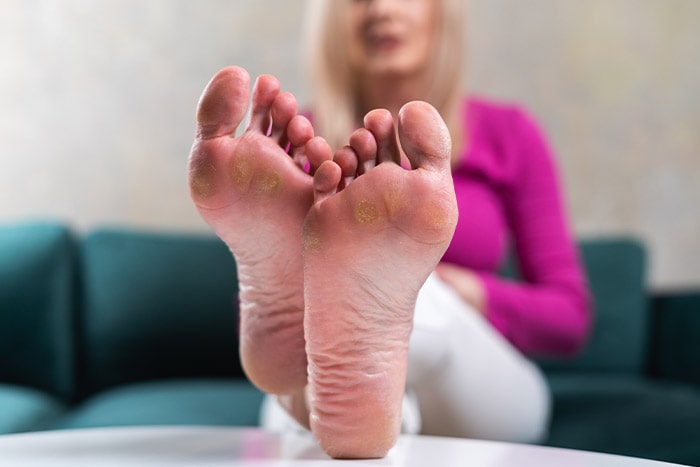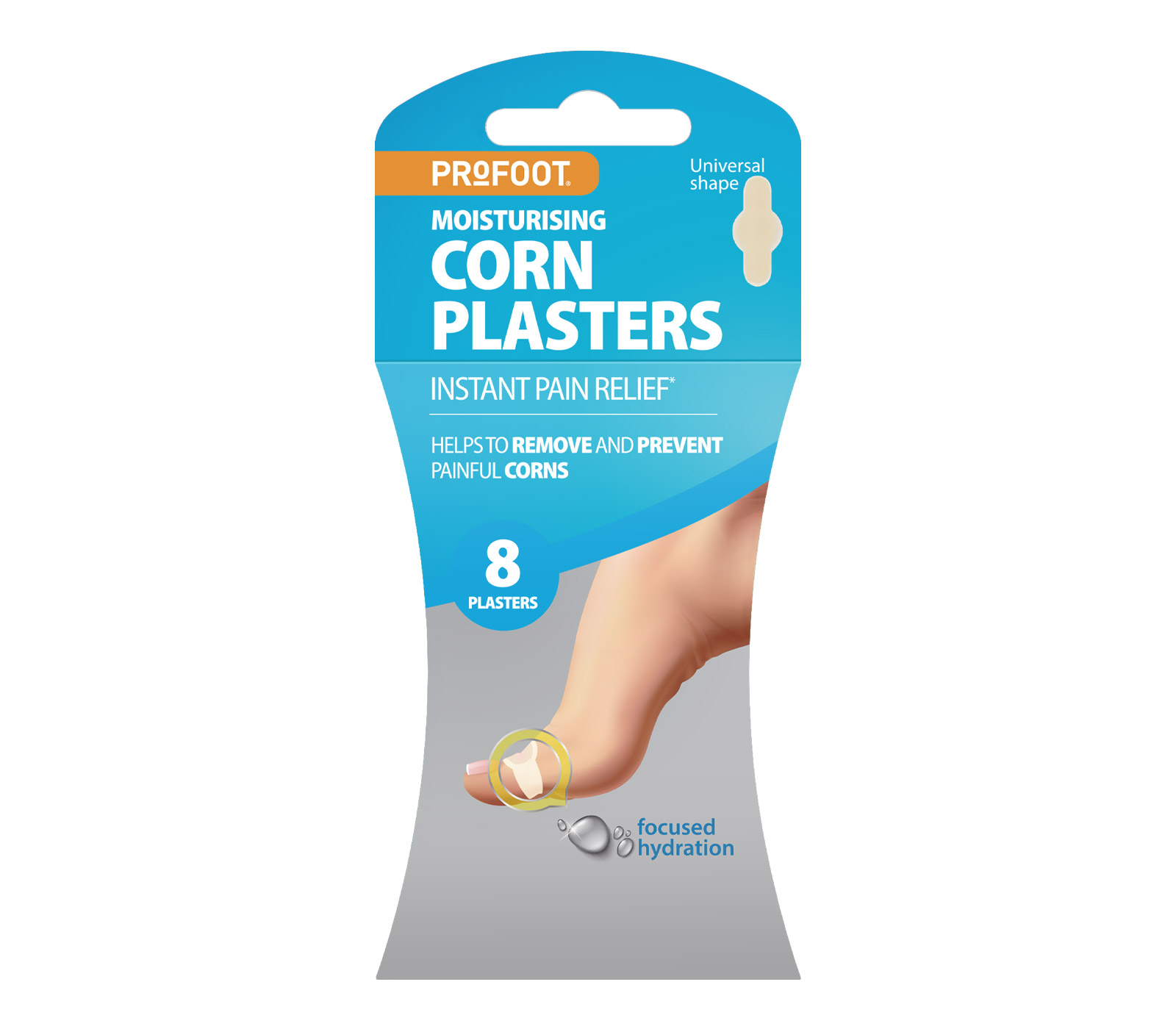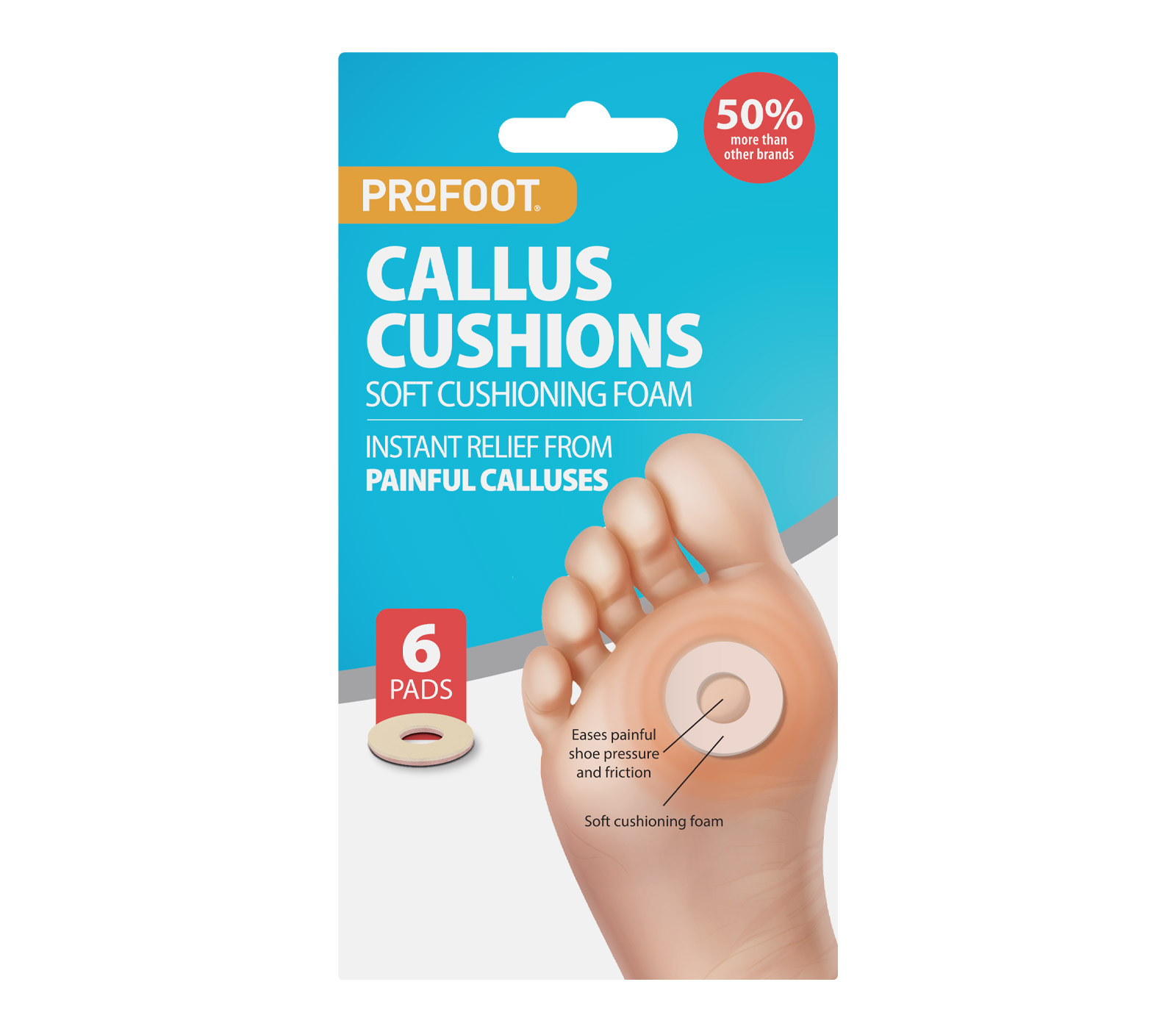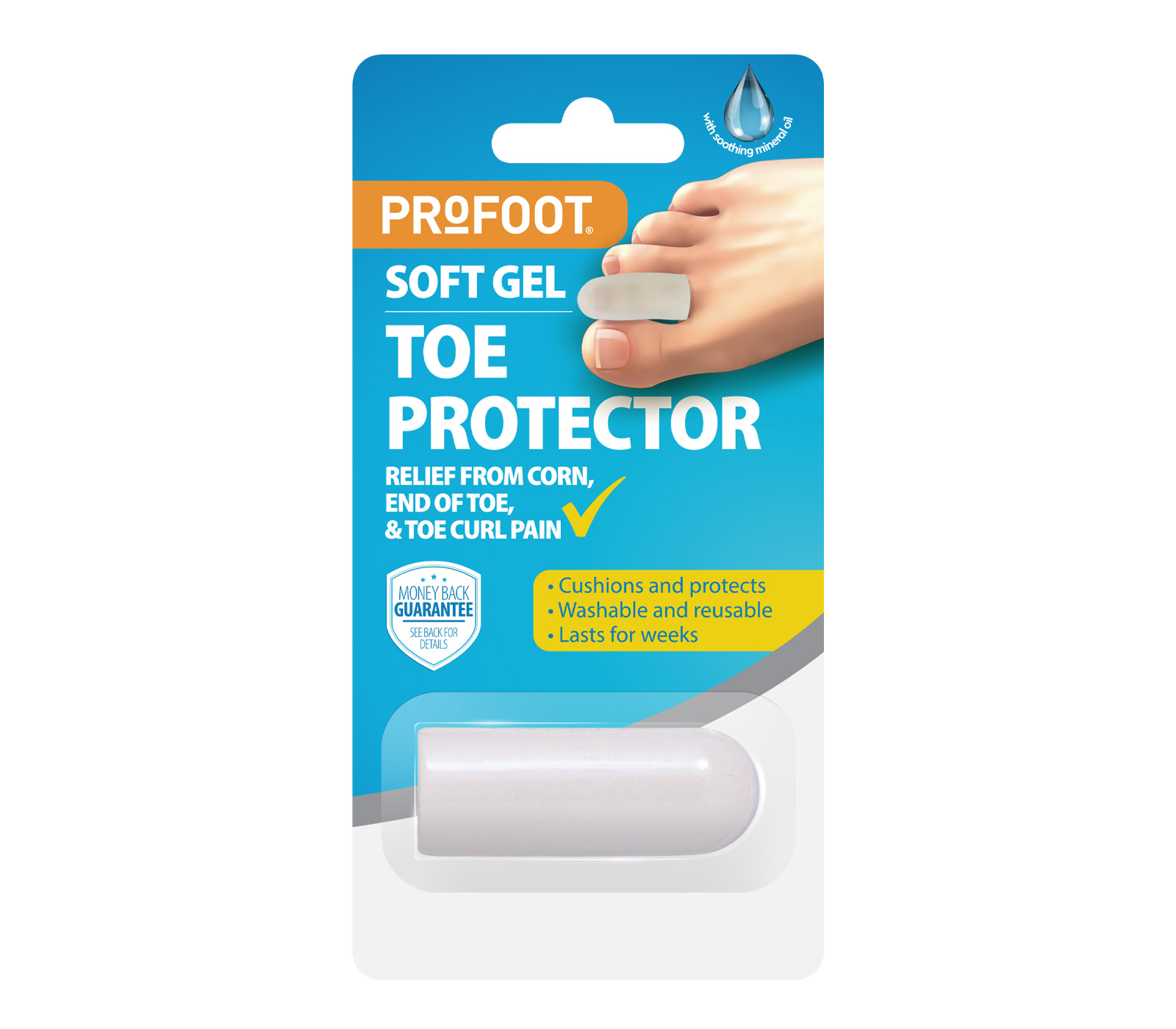Phone: +44 (0)20 8492 1600
Need help or have a question?
Contact us at: [email protected]
Corns and calluses can really hurt! At Profoot UK, we know how these foot problems can make your day tough. We’ve made this guide to help you deal with corns and calluses. Whether you have a stubborn corn or an annoying callus, our tips will help you get happier, healthier feet. With good care, you can make your feet feel much better and stop these problems from coming back.
Before we talk about treatment, it’s important to understand what corns and calluses are. Both are areas of thick skin, but they’re different:

Corns are small, round areas of thick skin with a hard centre. They usually show up on parts of your feet that don’t bear weight, like the tops and sides of your toes. Corns can hurt a lot when pressed. Calluses are bigger, flatter areas of thick skin. You’ll usually find these on the soles of your feet, especially under the heels or balls. Calluses don’t hurt as much as corns, but they can be uncomfortable if they get too thick.
Both corns and calluses happen because of friction or pressure. It’s your body trying to protect your skin, but this protection can start to hurt if it’s not taken care of. Corns usually happen because of constant rubbing in one spot, while calluses form from more spread-out pressure or friction. Knowing these differences can help you figure out what’s wrong and how to treat it.
One of the best ways to prevent and manage corns and calluses is by wearing good shoes. Here are some tips to help you choose the right ones:
Remember, your feet can change size over time, so it’s a good idea to measure them regularly. Things like getting older, gaining or losing weight, and pregnancy can all change your foot size and shape. Buying good quality shoes can really help prevent foot problems. It’s not just about comfort; it’s about protecting your feet from unnecessary stress and rubbing that can lead to corns and calluses.
Keeping your feet well-moisturised can help prevent corns and calluses. Dry skin is more likely to get thick and hard, so a good moisturising routine is key. Here’s what you can do to keep your feet soft:
For targeted moisturising, try our Profoot Moisturising Corn Plasters:

These plasters not only cushion your foot but also help soften and moisturise the corn. The hydrocolloid material provides focussed hydration that works to soften the hard skin over time, while the cushion helps relieve pressure and rubbing. Using these regularly can really improve your corns and make walking more comfortable.
Regular, gentle exfoliation can help prevent the build up of dead skin that leads to corns and calluses. Here’s how to do it safely:
Remember, the key word here is ‘gentle’. You’re not trying to scrub away the corn or callus all at once. Instead, aim for regular, gentle exfoliation to slowly reduce the thickened skin. This way is safer and works better in the long run. If you have diabetes or circulation problems, talk to a podiatrist before trying any exfoliation at home, as you might be at higher risk for complications.
Cushioning can help relieve pressure and rubbing on affected areas. This is especially useful if you’re on your feet a lot or if you have shoes that tend to rub in certain spots. Here are some options and how to use them:
Our Profoot Callus Cushions offer quick relief:

These cushions provide instant relief from painful calluses, easing pressure and rubbing under your foot. They’re made with super soft cushioning foam and have a hypo-allergenic adhesive, making them good for sensitive skin. The cushions are designed to stay in place all day, providing continuous protection. You can wear them with most types of shoes, making them a versatile solution for everyday comfort.
Regular foot soaks can help soften corns and calluses, making them easier to manage. Here’s a routine you can try:
This routine can help soften the hardened skin, making it easier to gently exfoliate afterwards. Just remember not to soak your feet for too long, as this can actually dry out your skin. Try to do this routine once or twice a week, depending on how your feet are doing. If you have diabetes or poor circulation, check with a doctor before starting any new foot care routine.
Corns and calluses often happen because of other foot issues. Dealing with these can help prevent future problems and provide long-term relief. Consider these steps:
Our Profoot Toe Protectors can help with alignment issues:

These protectors help moisturise and provide cushioning, reducing rubbing and pressure that can lead to corns and calluses. They’re really useful for people with hammertoes or other toe problems that can cause rubbing against shoes. The soft, flexible material fits comfortably around your toes, and you can wear them with most types of shoes. Using them regularly can help prevent new corns from forming and reduce discomfort from existing ones.
While some discomfort is common with corns and calluses, severe or ongoing pain should never be ignored. It could be a sign of a bigger problem. Here’s what to watch out for and how to respond:
If you have any of these symptoms, it’s important to seek professional advice. A podiatrist can properly diagnose the problem and recommend the right treatment. They might use special tools to safely remove excess hard skin, give you medicine if there’s an infection, or suggest custom orthotics to address underlying walking issues. Remember, getting help early can prevent small foot problems from becoming big health concerns.
While there are many home remedies for corns and calluses, it’s important to be careful. Some can do more harm than good, especially if not used correctly. Here are some dos and don’ts to keep in mind:
For a safe and effective treatment, consider our Corn Wraps or Corn Wraps XL:

These wraps provide targeted relief for corns, helping to moisturise and soften the skin as well as reducing pain. They work by creating a moist environment that helps soften the hardened skin, making it easier to remove gently over time. The XL size is perfect for covering bigger toes. They’re easy to put on and can be worn comfortably in most shoes, providing continuous treatment throughout the day.
You could also try our Corn Removal Plasters they provide an effective solution for treating corns and calluses. Each individually wrapped adhesive plaster contains salicylic acid, which helps break down hardened skin. A built-in protective disc reduces friction and relieves pressure, ensuring greater comfort during wear.
Preventing problems is always better than treating them. Keeping your feet healthy overall can help stop corns and calluses from forming in the first place. Here are some tips to keep your feet in good shape:
Remember, healthy feet are happy feet! By making these habits part of your daily routine, you can really reduce your risk of getting corns, calluses, and other foot problems. It’s an investment in your overall comfort and ability to move around easily.
Regular exercise is great for your overall health, including your feet. However, some activities can increase your risk of developing corns and calluses. Here’s how to stay active while protecting your feet:
By taking these precautions, you can enjoy your favorite activities without putting too much stress on your feet. Remember, staying active is important, but it shouldn’t hurt your feet. If you’re starting a new exercise routine, think about talking to a foot doctor or sports medicine professional to make sure you’re taking the right steps to protect your feet.
While many corns and calluses can be managed at home, there are times when it’s best to see a professional. Here are some situations where you should see a podiatrist:
A podiatrist can provide specialised treatments and advice tailored to your specific situation. They might use professional tools to safely remove hardened skin, prescribe custom orthotics, or suggest changes to your footwear and foot care routine. In some cases, they might recommend minor procedures to correct underlying structural issues. Remember, getting help early can often prevent small foot problems from becoming major health concerns.
Managing corns and calluses effectively requires a mix of prevention, proper foot care, and targeted treatments. By following these tips and using quality products like those offered by Profoot UK, you can keep your feet comfortable and healthy. It’s important to remember that foot care is an ongoing process, not a one-time fix. Regular attention to your feet, combined with the right products and professional advice when needed, can make a big difference in your overall foot health and comfort.
Remember, your feet carry you through life – they deserve the best care possible. Don’t let corns and calluses slow you down. With the right approach, you can have happy, healthy feet! Whether you’re an athlete, spend long hours on your feet for work, or simply want to keep your feet in good shape, these tips can help you achieve and maintain healthy feet. By taking care of your feet, you’re investing in your ability to move around easily, your comfort, and your overall well-being for years to come.